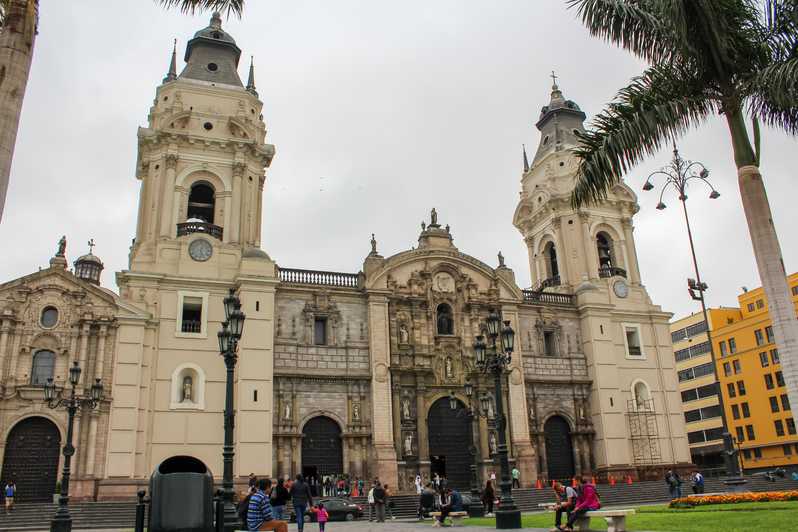
What can you see in Lima, Peru: The pyramid-shaped temple of Huaca Pucllana lies in the heart of Miraflores and is now incongruously surrounded by buildings. Built of adobe and clay bricks – a construction material that would never have survived for more than 1,000 years in any other climate – the pyramid is formed in seven staggered platforms. The Lima Culture, by whom the pyramid was built, developed in the central coast of Peru between AD 200 and AD 700. From artifacts discovered here, it is known to have been important as both a ceremonial and administrative center. The area is divided into two sections, one of which shows evidence of being used for offerings of fish, while the other appears to have been administrative. A burial vault was uncovered here with human remains, and artifacts have been found from the later Wari culture, which thrived in this area from about AD 500 to 900. You must tour the complex with a guide, but the tours are quite inexpensive.
Parque Kennedy, named after the 35th US president, hosts nightly events from dancing to art exhibits. It also houses hundreds of cats that prowl the park at night. Watch the cats and do some people-watching while eating picarones, a fried Peruvian dessert made of fried sweet potatoes dipped in honey. Peñas are music venues or restaurants, or even someone’s house, where traditional Peruvian music is played by a live band. This music is worlds apart from the electronic cumbia that has captured Lima.
You don’t have to leave Lima to begin your exploration of Peru’s historic sites. Built by the Lima culture sometime between 300 and 700 AD and constructed from millions of adobe bricks, the Huaca Pucllana is a giant pyramid located in Miraflores. After taking a tour of the ruins (don’t forget your sunscreen—the sun can be fierce), head to the site’s restaurant, Restaurant Huaca Pucllana, for some outstanding (but expensive) regional dishes. Nothing quite says Peruvian cuisine like a plate of practically straight-from-the-sea ceviche, and a visit to one of the capital’s top cevicherias should be high on your list of things to do in Lima. A mix of fish, red onions, chili peppers and sweet potato marinated in lemon, you can indulge in this simple yet delicious dish in practically any of the city’s restaurants, but for guaranteed quality, seek out Punto Azul, which is known for its delicate flavors, freshness of its ingredients and accessible price (expect to pay around 32 soles).
Campos de Vida Natural Foods – Corner of Ugarte and L. Prado. A little cafe and grocery store serving up homemade yogurt and integral breads, as well as Peruvian health foods like quinoa. Candy (corner of Brasil and Cusco) – This is the closest grocery store, although a quick taxi ride will get you to the posh Vivanda on Av. Javier Prado, or the small Plaza Vea on Av. Brasil. Candy is pretty bare-bones, but it’ll get you what you need. The produce section is a bit wilty, but why are you shopping for produce in a grocery store when you should be at the Magdalena Market? Read more images of this incredible ocean view penthouse on @AmazingPeruPenthouse on Facebook. Need a place to book in Lima, Peru? Read even more details on Magdalena del Mar penthouse to rent.
The Parque de la Reserva is a lovely park by day, but transforms itself into a spectacular water, sound and light show at night. The park’s 13 fountains are turned off during the day, but spring to life at night at this family-oriented tourist attraction in Lima. Visitors who stroll the Magic Water Tour are awed by the fantastic displays that transform ordinary fountains into wondrous eruptions when combined with laser lights and music, including classics and Peruvian melodies. The Guinness Book of Records says the Magic Water Tour is the largest fountain complex in the world.